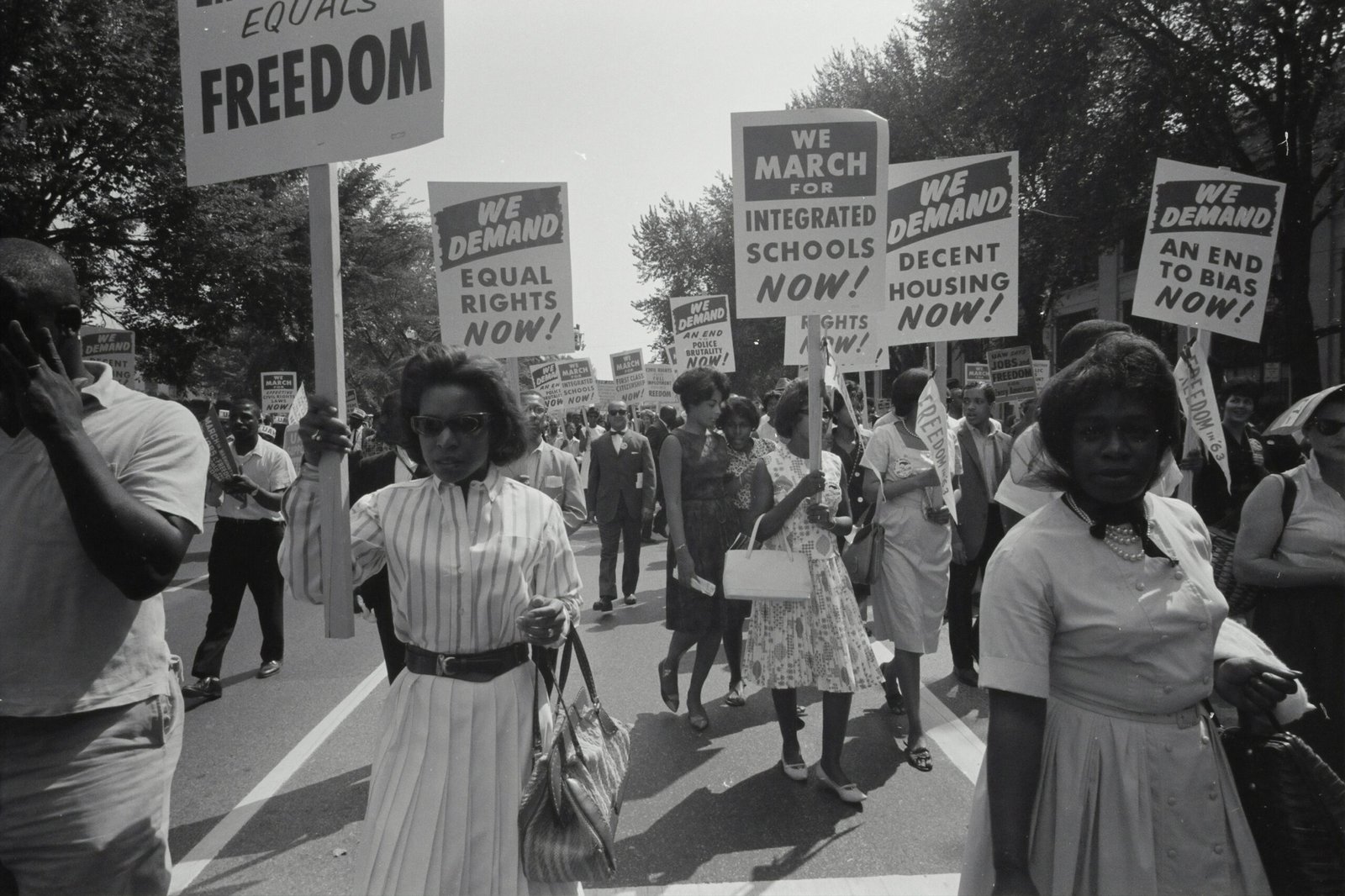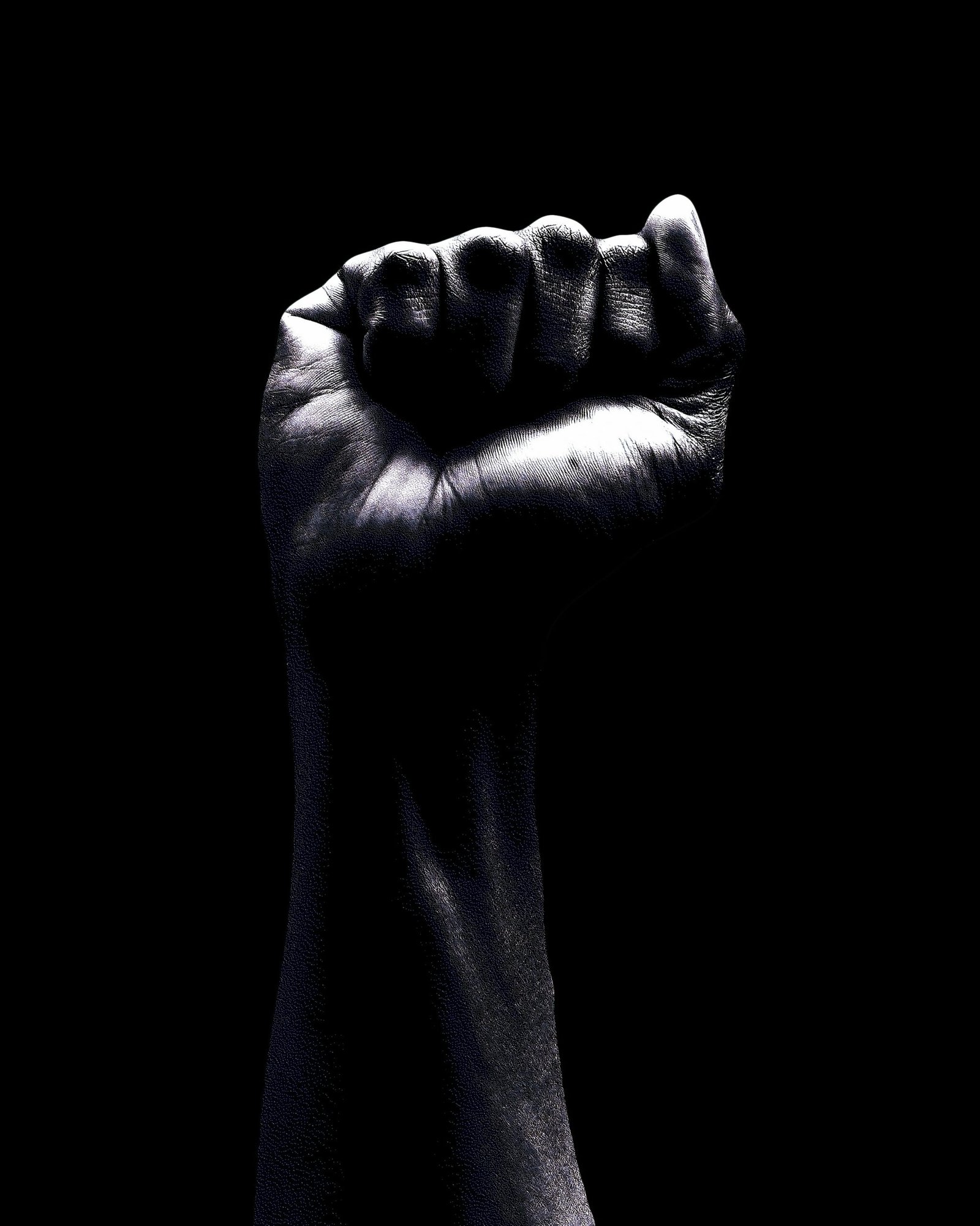Introduction to Lynching
Lynching, a practice rooted in violence, emerged in the United States during the early 19th century, evolving into a grim symbol of racial terror aimed predominantly at Black individuals. This extrajudicial punishment involved mob action, where individuals were hanged, shot, or subjected to other brutal methods, often in public spectacles. The act of lynching served not only as a means of instilling fear within the African American community but also as a tool for maintaining white supremacy and control in a society marked by systemic racism.
The motivations behind lynching are complex, often intertwining with broader themes of racial violence and societal control. During the Reconstruction era, following the Civil War, white supremacist groups, including the Ku Klux Klan, resorted to lynching as a method to reverse the socio-political gains made by Black Americans. This violent method was not merely an act of retribution; it was a statement of power, reinforcing racial hierarchies and ensuring the subjugation of the Black community. The gruesome spectacles of lynching highlighted a perverse social order, where the lives of Black individuals were devalued, and their rights systematically disregarded.
Lynching also played a significant role in perpetuating and normalizing systemic racism within American institutions. Its occurrence galvanized public sentiment and policies that further marginalized Black Americans, fostering an environment where racial violence was tolerated, if not condoned. Activists and historians contend that the legacy of lynching has endured, influencing contemporary racial dynamics and ongoing discussions surrounding equality, justice, and reconciliation in the United States. Understanding the historical context and implications of lynching is crucial in addressing the persistent echoes of this brutal practice in modern society.
The Origins of Lynching in America
Lynching in America has its roots deeply embedded in the nation’s colonial past, evolving significantly through the years, particularly post-Civil War during the Reconstruction era. Initially, acts of violence were conducted by communities, often as a means to enforce social control, particularly against enslaved Africans and their descendants. This violent tradition grew, blossoming into a form of racial terror aimed specifically at Black individuals across the United States.
Following the Civil War and the abolition of slavery, the Reconstruction era heralded significant advancements for Black Americans, including the right to vote and to hold public office. However, these developments were met with fierce opposition from many white Southerners who sought to maintain their dominance. The emergence of groups like the Ku Klux Klan marked a pivotal moment in the history of violence against Black people. This organization aimed to restore the antebellum social order through intimidation and brutal acts, including lynching as a means to instill fear in the African American population.
The establishment of Jim Crow laws further institutionalized racial segregation and inequality, providing an environment ripe for lynching. These laws perpetuated the notion of Black inferiority and validated the violent repression of any efforts toward equality. Social factors, such as pervasive racism and a culture of violence against Black people, were compounded by economic conditions that often left Black communities disenfranchised and vulnerable. As a result, lynching became a tool for maintaining white supremacy, targeting individuals accused, often unjustly, of crimes ranging from perceived threats to economic competition.
This troubled legacy of lynching laid the groundwork for ongoing systemic racism, perpetrating a cycle of racial terror that continues to resonate in contemporary society. Understanding these origins is essential for acknowledging the historical injustices that have shaped the experiences of Black Americans and continue to influence American culture today.
Key Events and Notable Cases
The history of lynching in America is punctuated by numerous key events that not only exemplify the brutality of racial violence but also serve as rallying points for civil rights activism. One of the most notorious cases is that of Emmett Till, a 14-year-old African American boy who was brutally murdered in 1955 after being accused of offending a white woman in Mississippi. Till’s body was discovered in the Tallahatchie River, showing evidence of horrific violence. His mother, Mamie Till, decided to hold an open-casket funeral to shed light on the brutality of racism. The subsequent trial, which ended with the acquittal of the accused, ignited national outrage and mobilized a generation of civil rights activists, significantly influencing the burgeoning Civil Rights Movement.
Another pivotal event is the Scottsboro Boys case, which began in 1931 when nine African American teenagers were falsely accused of raping two white women in Alabama. Despite overwhelming evidence of their innocence, the boys were convicted by all-white juries, leading to a series of retrials and national attention. The case highlighted systemic injustices within the American legal system and served as a catalyst for the fight against racial discrimination. Organizations such as the NAACP and the International Labor Defense took up the boys’ defense, bringing international awareness to the racial inequalities entrenched in the justice system.
Throughout the late 19th and early 20th centuries, thousands of lynchings occurred, with estimates suggesting that over 4,700 lynchings took place between 1882 and 1968. These acts of racial terror were often conducted in public and celebrated by crowds, serving as grotesque spectacles that instilled fear within Black communities. As such, each of these incidents and the aggregate of lynching cases contributed significantly to the civil rights dialogue, challenging the moral conscience of a nation and sparking movements that resonate to this day.
The Impact of Lynching on Black Communities
The legacy of lynching in America has left deep psychological, social, and economic scars on Black communities that resonate to this day. The practice, which targeted African Americans from the late 19th century into the mid-20th century, was not merely an act of violence; it was a mechanism of terror that instilled fear, suppressed dissent, and enforced social control. This pervasive atmosphere of fear significantly weakened community bonds, disrupting family structures and fostering an environment where trust was eroded. Many survivors and their descendants still grapple with the trauma tied to these events, leading to a complex interplay between collective memory and communal identity.
Psychologically, the impact of lynching has resulted in generational trauma within Black communities. The fear and anxiety produced by such violence can manifest in various ways, including heightened stress responses and chronic psychological distress. Furthermore, the stigma associated with being a victim or witness to these atrocities has often deterred open discussions about emotional pain and healing, leading to an internalized silence that complicates recovery processes.
Socially, the legacy of lynching created long-lasting divisions and insecurities within Black communities, which were often forced to navigate a landscape marred by racial violence and societal distrust. The erasure of these traumatic events from mainstream historical narratives has impacted collective identity, making it paramount for communities to foster dialogues about their past. This awareness strengthens resilience, as individuals and families confront shared histories and seek to heal together.
Economically, the cultural impact of lynching has resulted in systemic inequalities that persist today. Economic disenfranchisement was often the result of violence and intimidation directed at Black citizens, hindering opportunities for wealth accumulation and community development. These factors contribute to ongoing disparities, which continue to affect Black communities and highlight the long-term ramifications of a legacy rooted in fear and violence.
The Role of Law Enforcement and Government
The history of lynching in America is inextricably linked to the actions and inactions of law enforcement and government authorities. Throughout the late 19th and early 20th centuries, law enforcement officials often played a pivotal role in facilitating lynchings or failing to intervene when racial violence erupted. It was not uncommon for sheriffs or police officers to be present during these brutal acts, either showing tacit approval or actively participating in the violence against Black individuals. This complicity underscores a disturbing pattern that highlights the systemic nature of racial violence embedded within American institutions.
The legal system frequently failed to hold lynching perpetrators accountable, reflecting a broader indifference to the plight of Black Americans. In many instances, the lynchers were not only left unpunished, but local authorities, at times, actively colluded with them. This institutional negligence was evident in instances where law enforcement would arrest individuals accused of crimes but then allow mob violence to take its course, often leading to extrajudicial killings. The failure to protect Black citizens from such acts of mob violence illustrates a distinct failure of the legal framework meant to ensure justice and equality.
The Fight Against Lynching: Activism and Legislation
The history of lynching in America has prompted significant activism and legislative efforts aimed at eradicating this form of racial violence. One of the earliest and most influential advocates against lynching was journalist Ida B. Wells. She utilized her platform to raise awareness about the reality and frequency of lynching, debunking prevalent myths that framed the victims as criminals. Through her writings and public speeches, Wells galvanized public opinion and highlighted the need for legal safeguards against such acts of racial terror.
The National Association for the Advancement of Colored People (NAACP), established in 1909, further amplified efforts against lynching. This organization mobilized communities across the nation to confront and resist lynching through grassroots campaigns, lobbying efforts, and extensive media outreach. In 1918, the NAACP launched a campaign led by prominent figures including James Weldon Johnson, which sought to push for federal legislation to combat lynching, marking a pivotal moment in the fight for racial justice.
Throughout the 1920s and 1930s, various bills aimed at making lynching a federal crime were introduced in Congress, though they faced staunch opposition. Legislative efforts culminated in the introduction of the Dyer Anti-Lynching Bill in 1922, which sought to impose severe penalties for those involved in lynching. Despite its initial support, the bill ultimately failed to pass due to political maneuvering and the influence of segregationist groups.
During the Civil Rights Movement of the 1950s and 1960s, the fight against lynching transformed yet again, becoming intertwined with broader struggles for equality. Activists from diverse backgrounds took to the streets, demanding justice for lynching victims and advocating for comprehensive civil rights legislation. Through these unified efforts, the American public began to shift in its perception of racial violence, recognizing the urgency of addressing the lingering specter of lynching. This period underscored the effectiveness of organized activism in raising awareness and influencing policy, ultimately laying the groundwork for future legislative reforms.
The Legacy of Lynching in Contemporary America
The legacy of lynching continues to reverberate throughout contemporary America, shaping societal attitudes and racial discourse in profound ways. Historically, lynching was not merely an act of violence against individuals; it was a tool of systemic oppression, reinforcing white supremacy and instilling fear within Black communities. This historical context remains a critical lens through which we can understand modern manifestations of racial violence, such as police brutality and hate crimes, which echo the violence of the past.
In recent years, numerous high-profile incidents of police violence against Black individuals have drawn national outrage, reminiscent of the mob violence perpetuated during the era of lynching. The killings of individuals such as George Floyd and Breonna Taylor sparked protests across the nation and brought to the forefront the ongoing issues of systemic racism and police brutality. These events highlight how the legacy of lynching is embedded in the fabric of American institutions and continues to affect marginalized populations, illuminating the deep-rooted disparities that persist in law enforcement practices.
Moreover, hate crimes targeting Black Americans have seen alarming increases, mirroring the racial animus that fueled historical lynching. The FBI’s Hate Crime Statistics report reveals a troubling pattern whereby Black individuals are disproportionately affected by racially motivated violence. This statistic underscores the urgency of addressing the societal and cultural factors that permit such acts to persist and flourish, suggesting that the legacy of lynching is not merely historical, but a relevant and pressing issue of our time.
Today, discussions surrounding race and justice are profoundly influenced by this legacy. Activists draw on the history of lynching to advocate for systemic reforms, highlighting the need for accountability, equity, and justice. Understanding the historical roots of racial violence can galvanize contemporary movements, serving as a reminder of the work that remains to be done to ensure a more just society for all Americans. The echoes of lynching prompt us to confront uncomfortable truths about racial inequality and the lasting impact of historical oppression.
Educational and Commemorative Efforts
In recent years, numerous educational and commemorative initiatives have emerged to acknowledge the painful legacy of lynching in America. These efforts not only aim to honor the victims but also seek to educate society about the historical context and the ongoing implications of racial violence. The establishment of museums and memorials serves as a vital component of this movement, creating spaces for reflection and learning.
One notable example is the National Memorial for Peace and Justice, located in Montgomery, Alabama. This memorial honors thousands of African Americans who were lynched, offering a poignant reminder of the racial terror that thrived in the United States. By placing the names of victims on steel columns, the memorial promotes awareness and remembrance, urging visitors to confront the legacies of racial injustice. Such spaces facilitate dialogue and foster a deeper understanding of the historical grievances that have shaped current racial dynamics.
In addition to physical memorials, educational programs play a crucial role in addressing the impacts of lynching. Numerous academic institutions have introduced curricula focused on racial history, justice, and the implications of social inequality. These programs also partner with community organizations to enhance outreach and foster discussions about race relations. Academic conferences, workshops, and lecture series often emphasize the importance of acknowledging the past as essential in paving the way toward a more equitable future.
Moreover, community-led initiatives further underscore the relevance of this topic. Grassroots organizations across the country engage in activities such as public readings, storytelling sessions, and art exhibits that highlight the experiences of those affected by lynching. These efforts encourage active participation and support healing within communities. By creating spaces for dialogue and connection, these initiatives work to ensure that the history of lynching is recognized and that its lessons are imparted to future generations, promoting a more just society.
Conclusion and Call to Action
Throughout this blog post, we have explored the harrowing history of lynching as a devastating facet of racial violence against Black people in America. From the post-Civil War era to the Civil Rights Movement and even into the modern age, acts of lynching served not only as brutal punishments but also as tools of social control, instilling fear within Black communities. Understanding this history is essential not only for acknowledging the suffering endured but also for recognizing the societal structures that perpetuate racism and inequality today.
The legacy of lynching does not exist in a vacuum; it intertwines with contemporary issues such as systemic racism, police violence, and socio-economic disparities faced by Black Americans. Acknowledging this painful history is vital for fostering healing and progress. It serves as a powerful reminder of the ongoing struggle for racial justice and equality, underscoring the importance of collective remembrance and education.
As engaged citizens, it is imperative we take our learned insights and transform them into actionable steps. First, we must participate in open discussions about the legacy of lynching and its impact on present-day racism. These dialogues enable us to bridge gaps in understanding and create a more inclusive society. Furthermore, supporting anti-racist initiatives—whether through local organizations, educational programs, or community activism—can serve as a vital means of contributing to the dismantling of discriminatory practices. Your voice and actions can foster change, allowing for a communal effort in addressing the multi-faceted issue of racial injustice.
Together, by understanding the past and advocating for a more equitable future, we can strive to alleviate the burden that this dark chapter of American history has placed on generations and work towards a society characterized by racial harmony and justice.




The integration of IoT devices in agriculture is a brilliant example of technology solving real-world problems. Smart irrigation systems and soil monitors are helping farmers conserve water while improving crop yields. This is technology at its best – making traditional practices more sustainable and efficient.